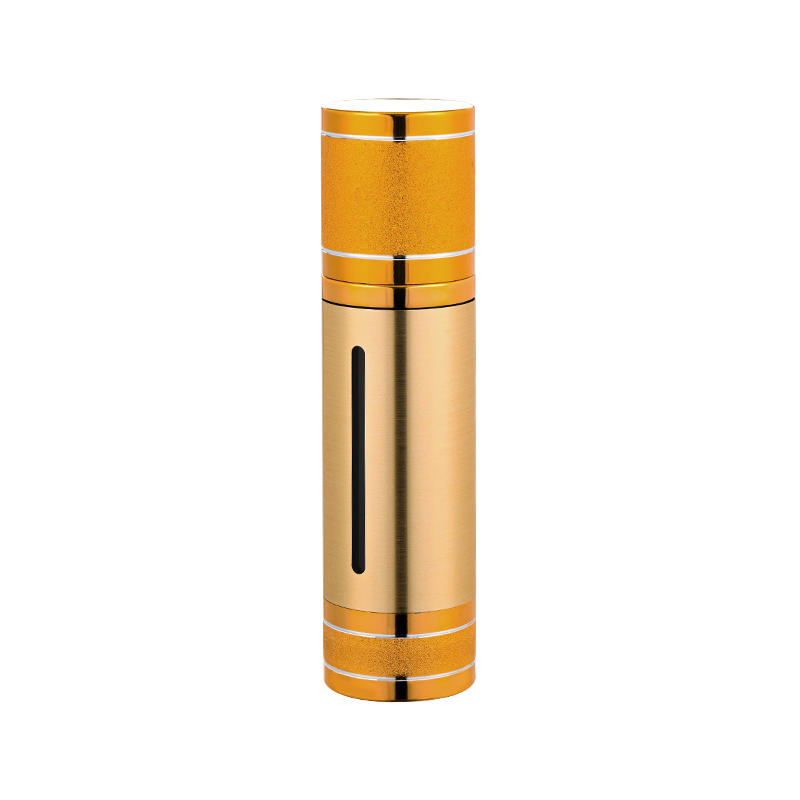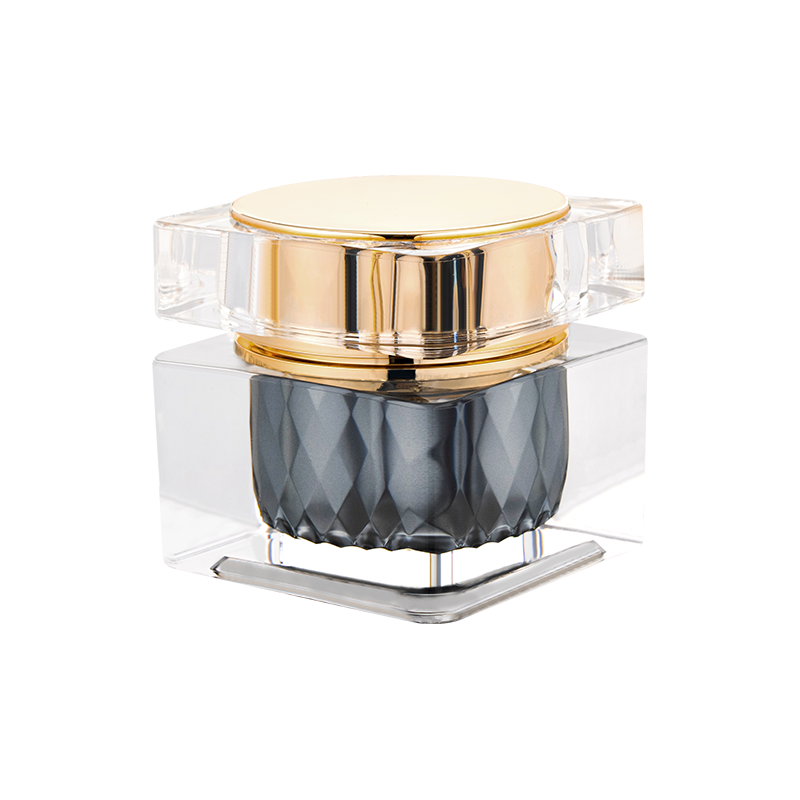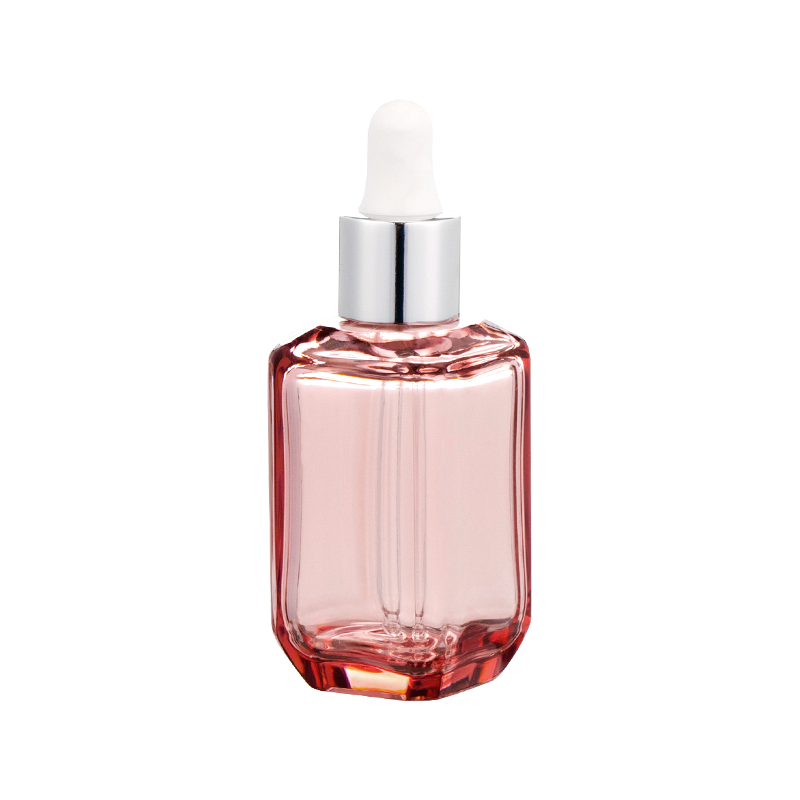Bơm phun sương nhôm điện hóa

Chai kem nhôm anodized hai mảnh thường bao gồm của hai phần: thân chai và nắp chai. Lá nhôm anodized đóng vai trò chính trong toàn bộ cấu trúc bao bì. Một mặt, nó hoạt động như một lớp rào cản để ngăn chặn hiệu quả các sản phẩm kem tiếp xúc với không khí bên ngoài và độ ẩm, tránh quá trình oxy hóa và suy giảm sản phẩm, và đảm bảo sự ổn định và chất lượng của sản phẩm; Mặt khác, lá tốt cũng giúp cải thiện tính thẩm mỹ tổng thể của bao bì và đáp ứng nhu cầu thẩm mỹ của người tiêu dùng cho sự xuất hiện của sản phẩm.
Lá càng dày thì càng tốt. Trong quy trình sản xuất và ứng dụng thực tế, đặc điểm rằng độ dày lá tỷ lệ thuận với trọng lượng của chai kem mang đến một loạt các vấn đề không thể bỏ qua. Khi lá quá dày, điều đầu tiên phải đối mặt là sự gia tăng đáng kể chi phí vận chuyển. Trong môi trường kinh doanh toàn cầu ngày nay, các sản phẩm mỹ phẩm thường cần được vận chuyển trên một khoảng cách xa từ trang web sản xuất đến các nhà ga bán hàng trên toàn thế giới. Trọng lượng tăng lên của mỗi chai kem do độ dày quá mức của lá sẽ dẫn đến sự gia tăng mạnh về chi phí vận chuyển do sự tích lũy của một số lượng lớn sản phẩm. Điều này không chỉ làm tăng trực tiếp gánh nặng chi phí hoạt động của doanh nghiệp, mà còn có thể ảnh hưởng đến chiến lược giá thị trường của sản phẩm ở một mức độ nhất định và làm suy yếu khả năng cạnh tranh về giá của sản phẩm.
Lá quá dày cũng có thể ảnh hưởng đến kinh nghiệm mang theo của người tiêu dùng do vấn đề cân nặng. Với sự tăng tốc của tốc độ của cuộc sống hiện đại, người tiêu dùng có yêu cầu cao hơn và cao hơn về tính di động của mỹ phẩm. Cho dù đó là du lịch hàng ngày, du lịch hoặc các chuyến đi kinh doanh, họ hy vọng có thể dễ dàng mang theo mỹ phẩm mà họ cần. Và những chai kem thừa cân chắc chắn sẽ mang lại sự bất tiện cho người tiêu dùng và giảm sự thuận lợi và sẵn sàng sử dụng sản phẩm của người tiêu dùng. Trong thị trường mỹ phẩm cạnh tranh khốc liệt, trải nghiệm người tiêu dùng là một trong những yếu tố chính trong việc xác định thị phần của sản phẩm và bất kỳ yếu tố nào có thể ảnh hưởng đến trải nghiệm của người tiêu dùng không thể bị bỏ qua.
Sự gia tăng chi phí nguyên liệu thô cũng là một vấn đề không thể tránh được. Là một thành phần quan trọng của chai kem, sự gia tăng độ dày của lá có nghĩa là sử dụng nhiều nguyên liệu thô hơn. Trong bối cảnh biến động thường xuyên trong giá nguyên liệu thô và xu hướng tăng tổng thể, điều này chắc chắn sẽ nén thêm tỷ suất lợi nhuận của sản phẩm. Đối với các công ty mỹ phẩm, lợi nhuận là một đảm bảo quan trọng để duy trì sự tồn tại và phát triển của công ty. Việc nén tỷ suất lợi nhuận có thể ảnh hưởng đến khoản đầu tư của công ty vào R & D, tiếp thị, xây dựng thương hiệu, v.v., và do đó hạn chế sự phát triển dài hạn của công ty.
Theo tiền đề đảm bảo hiệu suất sản phẩm, kiểm soát hợp lý độ dày giấy bạc là rất quan trọng để tối đa hóa hiệu quả chi phí. Điều này đòi hỏi bắt đầu từ nhiều khía cạnh và xem xét các yếu tố khác nhau.
Đầu tiên, trong giai đoạn nghiên cứu và phát triển sản phẩm, các doanh nghiệp nên tăng cường hợp tác với các nhà cung cấp bao bì để cùng nhau thực hiện nghiên cứu chuyên sâu về mối quan hệ giữa độ dày giấy bạc và hiệu suất sản phẩm. Thông qua một số lượng lớn các thí nghiệm và phân tích dữ liệu, xác định chính xác phạm vi độ dày giấy bạc không chỉ có thể đáp ứng các yêu cầu về hiệu suất rào cản và niêm phong của các sản phẩm kem, mà còn đạt được chi phí tốt nhất. Ví dụ, các loại sản phẩm kem khác nhau, chẳng hạn như kem dưỡng ẩm, kem chống nhăn, kem làm trắng, v.v., có thể được nghiên cứu cho các loại sản phẩm kem khác nhau do sự khác biệt về thành phần và yêu cầu ổn định. Đồng thời, sử dụng khoa học và công nghệ vật liệu tiên tiến, khám phá các vật liệu lá mới hoặc vật liệu composite để giảm trọng lượng và chi phí của lá mà không làm giảm hiệu suất.
Thứ hai, trong quá trình sản xuất, các doanh nghiệp nên tập trung vào việc tối ưu hóa các quy trình sản xuất. Các quy trình sản xuất nâng cao có thể kiểm soát chính xác độ dày của giấy bạc và đảm bảo tính nhất quán của chất lượng sản phẩm. Việc sử dụng các thiết bị sản xuất chính xác cao và hệ thống điều khiển tự động có thể làm giảm tác động của các yếu tố con người đến độ dày của lá, cải thiện hiệu quả sản xuất và giảm tỷ lệ phế liệu. Đồng thời, bằng cách tối ưu hóa quy trình sản xuất, việc sắp xếp các lô sản xuất hợp lý và nhận ra sản xuất quy mô lớn, chi phí sản xuất của mỗi sản phẩm đơn vị có thể được giảm thêm. Ví dụ, một số công ty mỹ phẩm lớn đã giới thiệu các hệ thống quản lý sản xuất thông minh để tiến hành giám sát thời gian thực và phân tích dữ liệu của từng liên kết trong quy trình sản xuất và điều chỉnh kịp thời các thông số sản xuất, cải thiện hiệu quả hiệu quả sản xuất và chất lượng sản phẩm, đồng thời giảm chi phí.
Hơn nữa, các công ty cũng có thể đạt được kiểm soát chi phí hiệu quả thông qua quản lý chuỗi cung ứng. Thiết lập mối quan hệ hợp tác lâu dài và ổn định với các nhà cung cấp, và cố gắng mua giá nguyên liệu thô thuận lợi hơn thông qua việc mua hàng số lượng lớn và ký hợp đồng dài hạn. Tối ưu hóa các liên kết hậu cần của chuỗi cung ứng, lập kế hoạch hợp lý các tuyến giao thông, chọn phương thức vận chuyển phù hợp và giảm chi phí vận chuyển. Ví dụ, một số công ty sử dụng vận chuyển container hóa, phân phối chung và các phương pháp khác để cải thiện hiệu quả vận chuyển và giảm tổn thất vận chuyển, do đó giảm chi phí hậu cần tổng thể.
Các công ty cũng nên chú ý đến những thay đổi trong động lực thị trường và nhu cầu của người tiêu dùng. Với sự cải thiện liên tục của nhận thức về môi trường của người tiêu dùng, các yêu cầu về hiệu suất môi trường của vật liệu đóng gói cũng ngày càng cao hơn. Trong khi kiểm soát độ dày của lá, các công ty có thể chọn các vật liệu lá thân thiện với môi trường để đáp ứng nhu cầu của người tiêu dùng đối với các sản phẩm thân thiện với môi trường và nâng cao hình ảnh thương hiệu của công ty. Đồng thời, theo thị trường Feed

Chai kem dưỡng da tròn acrylic: Một bản giao hưởng hoàn hảo về thẩm mỹ, chức năng và bảo vệ môi trường

Khả năng tương thích của các quá trình cuộn cát chân không bằng nhôm điện hóa
Danh mục tin tức
Bài viết gần đây

Dec 10,2025

